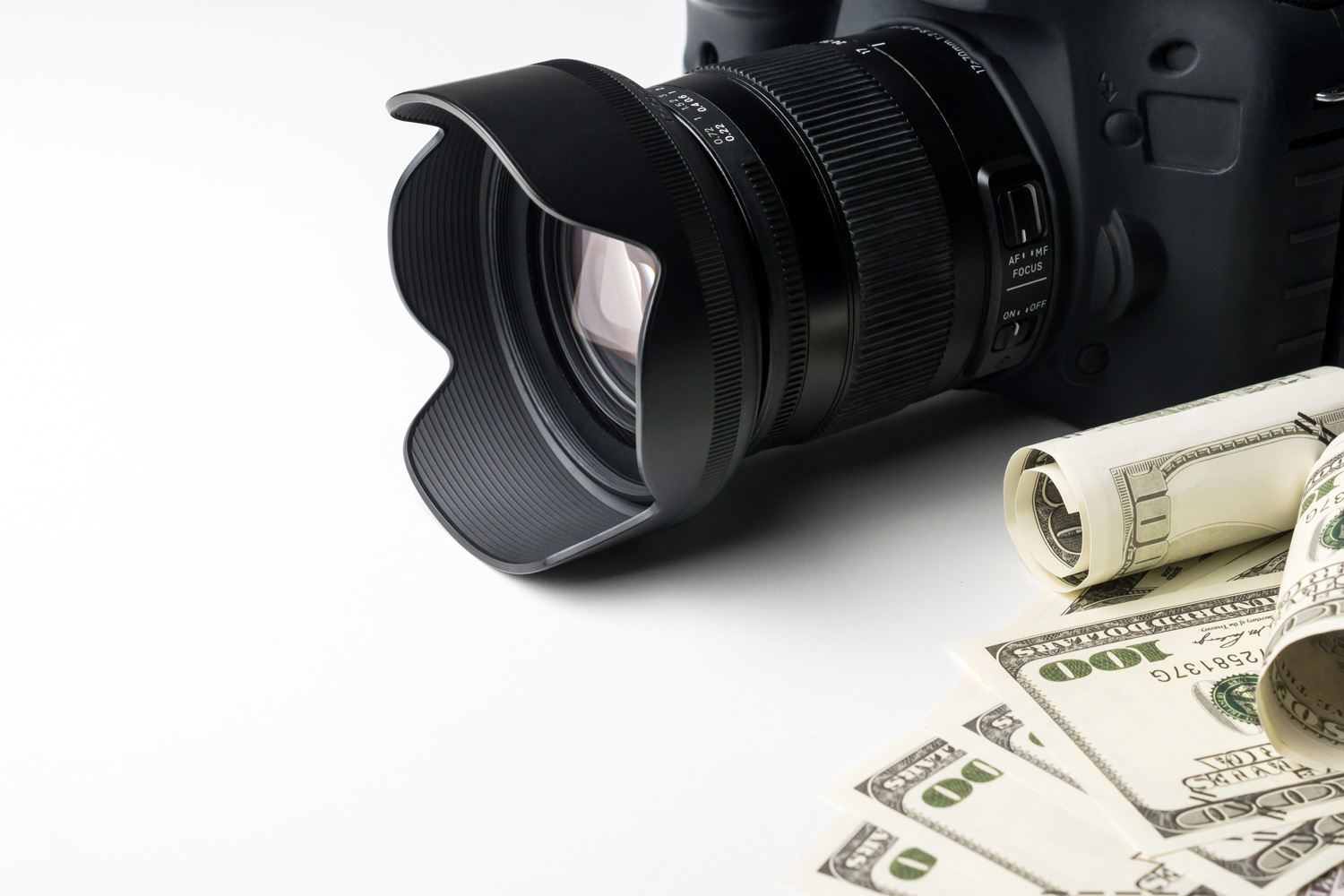Why is Professional Product Photography So Expensive?

Have you ever wondered why getting professional photos of your products seems to cost an arm and a leg? You’re not alone. Many business owners find themselves scratching their heads, wondering if there’s gold hidden in those camera lenses. Keep reading why professional product photography comes with a hefty price tag, covering four key areas: equipment, time, expertise, and the value it brings to your business.
Why Sending Quotes for Photography is Not Easy?
Sending quotes isn’t easy, especially when potential clients question them. It may lead to many uncomfortable conversations about money and pricing. The frustrating part is that many clients sell products at set prices. They understand the cost of designing and manufacturing a product and set prices accordingly. If a customer asked them to lower their prices because it didn’t fit their budget, they wouldn’t just change the price. If they did, they’d go out of business quickly. Yet, they expect other businesses to adjust their prices just because they ask.
Negotiation seems acceptable mainly with service-based businesses and even more so with certain services. However, even if there is negotiation, it should be respectful and reasonable. Companies should value those services that help them sell their products in the first place. This isn’t a post to call out anyone specific or bash those who question prices for photography services. Many people simply don’t know what goes into running a professional photography business. Get ready to discover some of the most common reasons for the price of professional product photography.
The High Price of Quality Equipment
One question, please. Can you run a marathon in flip-flops? Sounds impossible, right? That’s kind of what it’s like trying to do professional photography without the right equipment. Photographers need top-notch gear to produce high-quality images that make your products shine. We have to buy cameras that may cost more than a used car, lenses that could pay for a nice vacation, and lighting setups that could light up a small concert. And that’s just scratching the surface.
A professional photographer’s toolkit includes high-resolution cameras and specialized lenses for different types of photos (macro lenses, wide angle, etc.). Good lighting is crucial because, without it, well, without good lighting, there’s no good photography. And let’s not forget about editing software, which is essential for the post-production phase. Each piece of equipment plays a crucial role in creating a high-quality photograph. Just an expensive fancy camera is simply not enough to create stunning images that showcase your products in the best way possible.
For instance, the essential equipment I use for a product photography session includes my Nikon Z8 camera paired with a Nikkor Z 105mm macro lens and two strobe lights: the Godox AD1200 Pro and AD600 Pro. The cost of this bare minimum setup alone totals more than $7,000.00 USD.
Many Unseen Hours of Work
We are all a little skeptical when shopping online. At least once, many people were tricked by a product’s appearance online and then received it only to discover it doesn’t meet expectations in reality. Instead of going to a bigger retailer or searching for assurance, they need to feel comfortable placing an online order with you. High-quality product photography will allow your potential customers to get a good look at what they’re buying. And better photographs will definitely result in more sales.
First impressions matter. Customers make judgments based on your photos in the blink of an eye. However, photography is not just about pressing a button. The process is much more involved and time-consuming than most people realize. Let’s break it down:
Before the Shoot. Preparation is key. Before the shoot even begins, there’s much prep work to do. This is like the foundation of a house and absolutely necessary for the final product. Photographers need to understand the client’s vision, plan the shoot, gather props, and set up equipment. This preparation can take hours or even days of planning and coordination. Moreover, setting up the studio or location is another thing entirely, which involves hours and hours of arranging and fine-tuning the setup to get everything just right.
During the Shoot. A typical product photoshoot can last anywhere from a few hours to a full day or days. Photographers set up equipment and arrange lights, backdrops, and cameras to get the perfect photo. We meticulously style the products, ensuring every detail is perfect, and take multiple shots from various angles with plenty of adjustments. Moreover, we have to constantly adjust lights, move props, and tweak settings on their camera. In addition, we might take hundreds of photos to get just that one perfect shot. Thus, it’s a physically demanding job that requires a lot of patience and attention to detail.
After the Shoot. The hard work doesn’t stop when the camera is put away and continues with post-production. This is where the real magic happens. It involves selecting the best shots, editing images to improve their quality, and retouching to remove imperfections. Editing is an art itself and can take several hours per image, depending on the complexity and the desired outcome. This stage brings the photograph vision to life through countless hours of meticulous work. In my personal experience, sometimes the editing and retouching process can take even longer than the actual shooting time.
Skills and Experience Don’t Come Cheap
You wouldn’t let an amateur cut your hair, right? The same principle applies to product photography. Professional photographers apply all their expertise and creative skills to effectively communicate your brand’s message. We’ve spent hours improving our craft, learning about lighting, composition, and the nuances of different types of photography and videography.
I wish I could tell you how many hours and money I’ve spent on continuing education over the last few years. I’m a declared hoarder when it comes to courses and classes. I don’t pinch on education because I know all that knowledge will help me acquire new skills that will elevate the quality of my work and, in the end, will benefit my clients and their businesses.
Experience also means efficiency. The more a photographer practices and shoots, the quicker they become; the more content they can produce in a specific time and the better the quality of the work will be. So, when you’re paying a photographer with experience, you’re also paying for the time it took him to get there.
Professional photographers make quick decisions and adjustments and know how to get the shot efficiently. When you pay a skilled professional a large fee for a small amount of work (we already know that’s a lot of work that we do!), you’re not just paying for the time it takes to do the job; you’re also paying for the hours of training and experience that enable us to know exactly what to do.
The Value of Professional Photography for Your Business
Professional product photography is an investment. High-quality images play a crucial role in your marketing strategy. They help build your brand, attract customers, and ultimately drive sales. Here’s how:
First Impressions Matter: Customers often make snap judgments based on photography. High-quality images can create a positive first impression, making your products look more appealing and trustworthy.
Brand Consistency: Consistent, professional images help reinforce your brand’s identity and message. This consistency builds trust and loyalty among your customers.
Increased Sales: Better product photos lead to higher conversion rates. When customers can clearly see the details and quality of your products, they’re more likely to make a purchase.
Better product photos lead to higher conversion rates. When customers can clearly see the details and quality of your products, they’re more likely to make a purchase.
Check out a blog post we wrote about 5 Reasons to Invest in Product Photography.
We Are Business Owners
Finally, just like our clients, we are also running a business. As freelancers, photographers bear the responsibility of covering our taxes from the fees we charge. Beyond taxes, there are numerous other costs of doing business: essential software for editing and running our businesses, insurance, retirement planning, and studio fees for those who maintain a dedicated workspace. While we are deeply passionate about photography and love what we do, we also need to make a profit and ensure our businesses are financially viable.
A High-Quality Photography is Worth Every Penny
So, next time you see a quote for professional product photography and feel your jaw drop, remember that the price also includes high-quality equipment, hours of dedicated work, and the photographer’s time, skills, and expertise, which can significantly boost your business. That’s why investing in professional photography is like putting your best foot forward in a crowded and competitive marketplace. It’s an investment that can yield substantial returns, making it worth every penny.
If you want professional photos with expert equipment, make the smart move and contact us now at the link bello. Isn’t it time your products got the spotlight they deserve?
Learn how to choose the right angles for your product photos to showcase your brand and attract more customers.
Create professional stop-motion videos with these 10 tips, perfect for photographer and brands looking to elevate their content.
Looking for a product photographer for your next photoshoot? Read on to learn 10 key questions to ask before hiring one to ensure a seamless experience and excellent results.
Have you ever wondered why professional photography is so expensive? Discover why professional product photography is a worthwhile investment. Learn about the costs and value it brings to your business.
Investing in professional product photography is essential for brands. High-quality photos should be integrated into digital marketing campaigns, content marketing, social media strategy, and more. Learn how to make the most of your investment with these 10 strategies.
Discover the impact of high-quality product photographs on your online business. Elevate your e-commerce brand with professional photography.
Learn four tips that will help you find the perfect product photographer for your brand. Define your needs, set a budget, review portfolios, and ask key questions.







